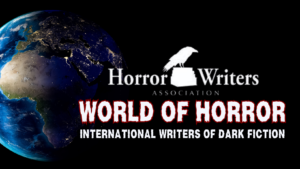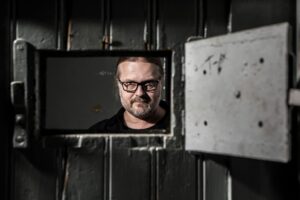World of Horror: Interview with Marko Hautala


Marko Hautala is a Finnish horror writer whose novels and short stories have appeared in eight different languages. In 2020, his novelette “Pale Toes” (in Valancourt Book of World Horror Stories Vol. 1) was nominated for the Shirley Jackson Award. Hautala’s novel The Dark Architect is currently being developed into a movie by Matila & Rohr Productions: https://matilarohr.com/en/
What was it about the horror genre that drew you to it?
I was seven or eight when I read a comic book version of Edgar Allan Poe’s “A Descent into the Maelström.” It gave me nightmares, yet I had to read the story again and again. Looking back, I can understand that I intuitively felt that this is the kind of poison that is also a medicine. I think horror fiction has saved me at several points in my life.
Is there a horror tradition in your country, in your culture? A taste for horror, a market? Not necessarily literature; perhaps oral tradition too.
Unlike many other countries, Finland doesn’t have a strong Gothic tradition, but the genre has always been there, although in the margins. Quite often, novels and films that are clearly horror are not called that. For example, a classic Finnish movie called The White Reindeer (1952) is pure folk horror but was in its day considered art cinema.
Who are some of your favorite characters in horror, internationally and/or in your own culture?
In my own culture, I really enjoy the pagan stuff that you find in folklore and in our national epic Kalevala. For example, there’s a being called manalainen (“underworlder”). Manalainens usually appear in groups, and as they linger between this world and the world and the underworld, they usually have missing limbs, half the head, or only one eye as part of their bodies are always in the other world.
In Kalevala and traditional Finnish folk poetry, there’s also a mysterious sea monster called Iku-Turso. The word iku is an archaic word for “eternal” and turso for “giant.” The latter word also became the Finnish word tursas, which means “octopus,” so I can’t help but get some Lovecraftian vibes from Iku-Turso.
Do you make a conscious effort to include characters and settings from your country in your writing and if so, what do you want to portray?
There’s no effort really, as it’s easiest to write about things that are closest to me. I always write primarily for the Finnish audience in the sense that I don’t consciously try to make my stories accessible to international readers. My novels and short stories have been translated into several languages, however, so they also seem to work in other cultural contexts.
If you are not a native English speaker but write in English, do you first think of horror in your native language or English? How do you draft them in your mind, in English or your mother tongue?
Most of my stuff has been translated by other people, but on the rare occasion I write in English, my writing “voice” feels completely different as if I was a different person. That has always fascinated me.
What has writing horror taught you about the world and yourself?
Looking back at the nine novels and all the short stories I’ve published so far, I can see that writing horror has helped me to deal with some personal issues. I think I’ve always known intuitively that facing your worst fears and writing about them can heal you. Funnily enough, the more optimistic and balanced I’ve become as a person, the better I’ve become at writing horror, I think.
How have you seen the horror genre change over the years? And how do you think it will continue to evolve, both in the US and in your country?
It’s more diverse in all senses of the word, which is great. I tend to think that there’s no stopping that development, but I do worry about AI and certain trends in the book business that might tilt the genre too much toward simplistic stories that do not challenge the reader in any way. I hope I’m wrong.
How do you feel the International horror writing community has been represented thus far in the market and what hopes do you have for representation going forward?
Horror tends to be a hard sell for agents and publishers, and it’s even harder for writers outside the English-speaking world. I think we have to try and look for ways in which the genre could be made more diverse also in this sense. Valancourt Books did a great service to the genre by publishing their World Horror anthologies, in which they gathered published writers from around the world and introduced them to English-speaking audiences.
Who are some international horror authors you would recommend?
Apart from several of those included in your International Horror Month, I would recommend Anders Fager’s story collection Swedish Cults, Mats Strandberg’s novel Blood Cruise, and Luigi Musolino’s collection A Visible Darkness. I’m probably the only Finnish horror writer whose work is relatively easy to find in English, but I think some stuff by Johanna Sinisalo and Pasi Ilmari Jääskeläinen would go down well with horror audiences. And of course, there are several fantastic Finnish writers whose work can’t be found in English, at least not yet.
What is one piece of advice you would give horror authors today?
Follow your fears, not trends.




Awesome interview. Very interesting answers. Thank you So Much, Marko.